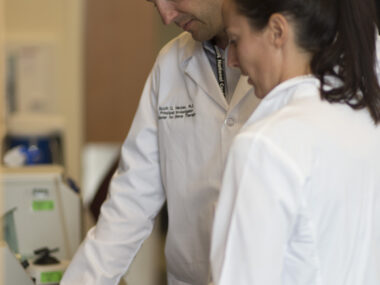New genetic treatments for CMT are focus of CMTRF, Nanite team up
Biotech partner to work on new ways to deliver gene therapies
Written by |

The CMT Research Foundation (CMTRF) is joining forces with Nanite, a biotechnology company, to work toward the development of new gene therapies for Charcot-Marie-Tooth disease (CMT).
Nanite will use its artificial intelligence platform to design delivery vehicles that can get genetic medicines to certain cells in the body, the CMTRF said in a press release announcing the partnership.
“The program is one of several building blocks directed towards validating Nanite’s platform as an important addition to the choices available to gene therapy companies,” the foundation stated.
Investigating ways to improve gene therapies for CMT
CMT is caused by mutations that lead to problems in the peripheral nervous system — the nerves outside the brain and spinal cord that run throughout the body. Mutations in more than 40 genes have been linked with the various types of CMT.
Several of the most common types of CMT — including CMT types 1A, 1B, and 1X — are caused by mutations in genes that are only or almost only active in Schwann cells. These cells are responsible for making myelin in the peripheral nervous system.
Myelin is a fatty wrapping around nerve fibers that helps them to send electrical signals, a bit like rubber insulation wrapped around a copper wire. In these forms of CMT, Schwann cells are not able to properly produce myelin, which ultimately causes problems with the electrical activity of peripheral nerves and gives rise to disease symptoms.
To develop gene therapies for these types of CMT, it would be useful to have a way to specifically deliver genetic cargo to the Schwann cells that are primarily affected in the disease. However, these cells are normally kept locked away behind a cellular wall called the blood-nerve barrier or BNB. This barrier helps to protect the nervous system from toxins in the bloodstream, but it also can make it harder to get medications into the nervous system where they are needed.
That’s where the new collaboration comes in.
Under the new partnership agreement, Nanite will work to design delivery vehicles for genetic medicines to Schwann cells. The company intends to use polymer nanoparticles (PNPs) — molecular shipping containers made of singular repetitive units arranged around genetic cargo — to deliver therapies to the cells. The PNPs are designed using Nanite’s artificial intelligence platform, called SAYER.
The program is one of several building blocks directed towards validating Nanite’s platform as an important addition to the choices available to gene therapy companies.
The program will specifically aim to create PNPs that can deliver a type of genetic therapy called antisense oligonucleotides, or ASOs. In simple terms, these are small pieces of DNA or RNA with a specific sequence that can interfere with the process by which a target gene is converted to proteins.
CMT1A, the most common form of CMT, is usually caused by duplication of the PMP22 gene, which leads to overproduction of the PMP22 protein. Excess PMP22 clogs up the myelin-making molecular machinery in Schwann cells, ultimately disrupting the structure and function of the myelin sheath.
In theory, using an ASO to reduce PMP22 protein expression could be therapeutic in CMT1A — but getting ASOs to Schwann cells has proven a limitation of this therapeutic strategy.
“A major step forward in the potential treatment of CMT1A was made in 2017 when researchers developed antisense oligonucleotides (ASOs) capable of decreasing PMP22 expression in rats and mice. However, because very little made it past the [blood-nerve barrier], the ASOs had to be given at concentrations so high that they caused toxicity,” said Cleary Simpson, CEO of the CMTRF.
“Our partnership with Nanite will use their SAYER platform to design PNPs to improve targeting of ASOs to Schwann cells, thereby lowering the effective dose to a point that toxicity is no longer a concern,” Simpson said.
According to Shashi Murthy, PhD, co-founder and chief technology officer at Nanite, the project will be conducted in two phases. First, PNPs loaded with ASOs will be tested on Schwann cells in a dish to ensure that they can reduce PNP22 protein levels as designed. Then, the therapies will be tested in animal models.
In its statement, the CMTRF called the work “an emerging technology for drug delivery to hard-to-hit targets.”






